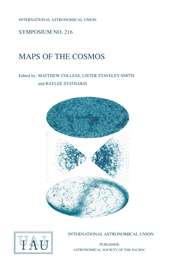Article contents
Galactic Center: Implications of Recent Chandra Observations for Spherical Accretion Models of Sgr A*
Published online by Cambridge University Press: 13 May 2016
Abstract
At the center of the Milky Way lurks a unique compact nonthermal radio source, Sgr A*. It is thought to be powered by a 2.6 × 106 solar mass black hole that is accreting the stellar winds from the numerous early-type stars that exist in the central parsec. However, until recent high resolution Chandra observations, Sgr A* had never been unequivocably detected at wavelengths shorter than the sub-millimeter. We present a spherical accretion model which is consistent with both the flux and steep spectral shape of the X-ray emission from Sgr A*.
- Type
- The Inner Regions of Galaxies
- Information
- Copyright
- Copyright © Astronomical Society of the Pacific 2001
References
- 1
- Cited by




